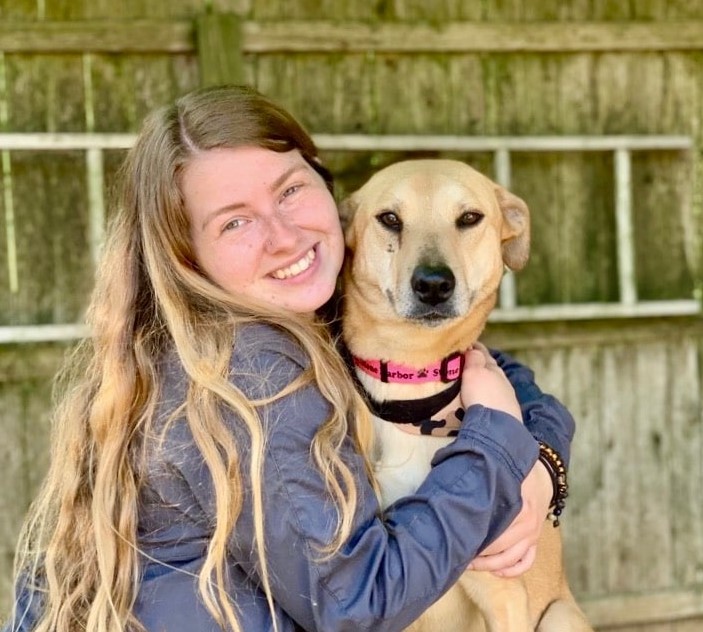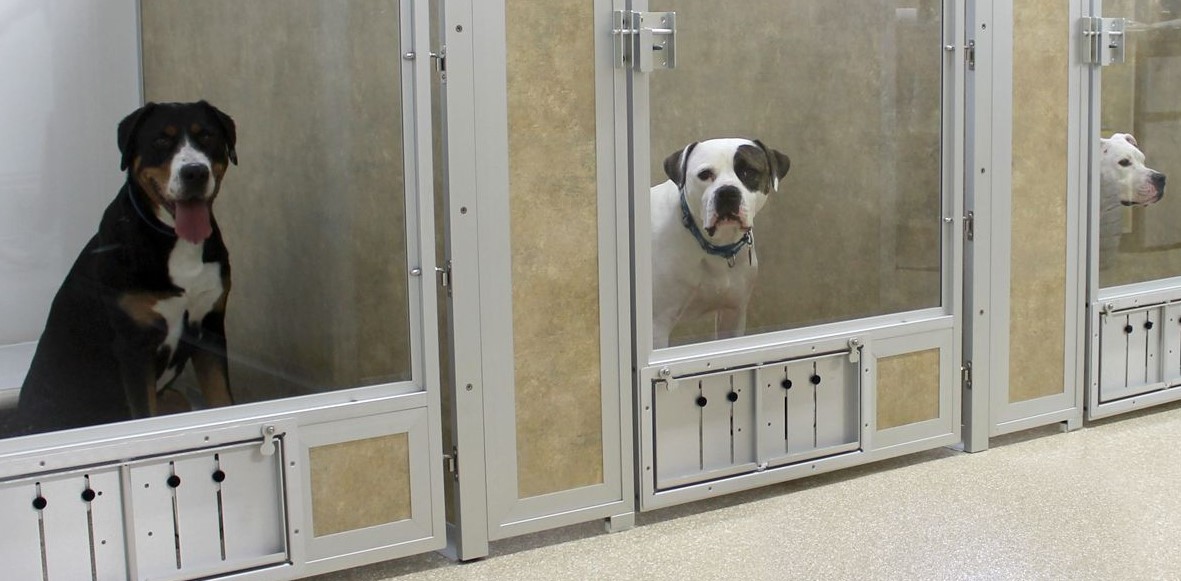When it comes to our four-legged friends, we want the best for them. But life sometimes throws us situations where we must leave our canine companions behind. This leads us to the question: How long can you board a dog? In this comprehensive guide, we’ll explore the ins and outs of dog boarding, providing you with essential information to ensure your pup’s well-being during your absence.

What is Dog Boarding?
Dog boarding is a service offered by professional pet care facilities. It provides a safe and supervised environment for your dog when you can’t be there to look after them. Whether you’re going on a vacation, dealing with a family emergency, or just need some time away, dog boarding is an excellent option to consider.
Types of Dog Boarding
There are different types of dog boarding services available, each catering to the specific needs of your furry friend:
Traditional Kennels
Traditional kennels are facilities designed to accommodate a large number of dogs. They offer a standard boarding experience with various amenities, such as regular feeding and exercise schedules.

Luxury Boarding
For pet parents who want their dogs to experience a more luxurious stay, luxury boarding facilities provide extra comforts like private suites, gourmet meals, and even spa treatments.
In-Home Boarding
Some pet sitters offer in-home boarding services, where your dog stays with the sitter in their home. This can provide a more homey and comfortable environment for your pet.
Doggy Daycare and Overnight Boarding
These facilities combine daycare and overnight boarding. Dogs enjoy playtime during the day and rest in kennels at night.

Factors That Determine How Long You Can Board Your Dog
The duration you can board your dog depends on several key factors:
Your Dog’s Personality
Every dog is unique. Some are more social and adapt well to new environments, while others may experience stress in unfamiliar settings. Understanding your dog’s personality is crucial.

Age of Your Dog
Puppies and senior dogs may have different needs. Puppies require more attention and care, while senior dogs may need special accommodations.
Health and Medical Requirements
If your dog has specific medical needs or requires medication, make sure the boarding facility can cater to these requirements.

Boarding Facility’s Policies
Different facilities have varying policies regarding how long they allow dogs to stay. Make sure to discuss this with the facility in advance.
Your Absence Duration
The length of your trip or absence will naturally play a significant role in determining how long your dog can be boarded.
Tips for a Successful Dog Boarding Experience
To ensure your dog has a comfortable and happy stay while you’re away, consider these essential tips:

Visit the Facility in Advance
Before boarding your dog, take a tour of the facility. This will help you assess if it’s a good fit for your pup.
Provide Familiar Items
Bringing your dog’s favorite toys, bedding, and even a piece of clothing with your scent can help ease their anxiety.
Discuss Your Dog’s Routine
Share your dog’s daily routine with the boarding facility, including feeding schedules, exercise habits, and any medications.
Emergency Contact Information
Make sure the boarding facility has up-to-date contact information in case of an emergency.

How Long Can You Board Your Dog?
The ideal period for boarding your dog depends on the factors mentioned above. In general, it is recommended not to leave your dog for more than two weeks at a time. However, if you have a reliable boarding facility and your dog is comfortable, some pet owners leave their dogs for longer periods of time.
It’s crucial to check with the facility about their policies and recommendations for your specific situation.
What Happens During a Dog’s Stay at a Boarding Facility?
While you’re away, your dog’s stay at a boarding facility typically includes the following activities:

- Feeding: The facility will follow your dog’s regular feeding schedule.
- Exercise: Your dog will receive daily exercise, either through playtime with other dogs or individual walks.
- Social Interaction: Your pup will have opportunities to socialize with other dogs and the staff.
- Rest Time: Dogs also need downtime to rest and relax.
Signs of a Happy Dog at a Boarding Facility
To ensure your dog is comfortable and content during their stay, watch out for these signs:

- A Healthy Appetite: A dog that eats well is likely to feel at ease.
- Playfulness: A happy dog will engage in play with other dogs or staff.
- Alertness: Your dog should appear alert and aware of their surroundings.
- Affection Toward Staff: If your pup shows affection to the facility staff, it’s a good sign they feel safe.
Preparing Your Dog for Boarding
Before you leave your dog at a boarding facility, make sure you’ve done the following:
Up-to-Date Vaccinations
Ensure your dog’s vaccinations are current. This not only protects your dog but also others in the facility.
Proper Identification
Double-check that your dog has a collar with an ID tag, and consider microchipping for added safety.

Special Instructions
Clearly communicate any special requirements or behaviors your dog has.
Common Concerns About Dog Boarding
It’s natural to have concerns when boarding your dog. Here are answers to some common questions:
Will My Dog Get Sick?
Boarding facilities typically have strict cleaning and vaccination protocols to prevent illnesses from spreading. However, it’s essential to keep vaccinations up to date.
Will My Dog Be Stressed?
Some dogs may experience stress initially, but professional facilities are well-equipped to handle these situations and ensure your dog’s comfort.

How Do I Choose the Right Facility?
Research is essential. Read reviews, visit the facility, and ask for recommendations from other pet owners.
Conclusion
Boarding your dog is a responsible choice when you need to be away from your furry friend. By understanding your dog’s needs and the policies of the boarding facility, you can ensure a safe and comfortable stay for your dog. Remember, every dog is different, so evaluate your dog’s personality and preferences before making any decisions.
Resources & References
Here are some reputable resources and references to help you further explore dog boarding:
Recommended Articles
Recommended Video
For a visual guide on dog boarding, consider watching the YouTube video titled “Boarding Your Dog – What You Need To Know.” This video provides additional insights into ensuring a comfortable and safe boarding experience for your beloved pet.
In this guide, we’ve covered the essential aspects of dog boarding, helping you make informed decisions about how long you can board your dog. Remember that your dog’s well-being should always be the top priority, so choose the right facility and duration that best suits your furry friend’s needs.
FAQs – How Long Can You Board a Dog
How long is it okay to leave a dog in a kennel?
Most kennels have a limit of 2-4 weeks, but it’s best to check with the kennel directly.
Is it stressful for a dog to be boarded?
Yes, it can be stressful for a dog to be boarded, especially if they’re not used to being away from home and family.
How long can I leave my dog for vacation?
It depends on your dog’s individual needs. If you have a high-energy dog, you’ll need to ensure they get enough exercise while you’re gone. If you have a dog with separation anxiety, you’ll need to choose a kennel that can provide the extra support they need.
What happens when you leave your dog for 2 weeks?
Some dogs may become anxious or depressed if left alone for 2 weeks. It’s essential to ensure they have plenty of toys and activities to keep them occupied while you’re gone.
Can I kennel my dog for 12 hours?
Yes, you can kennel your dog for 12 hours, but it’s best to avoid doing this regularly. If you need to leave your dog for long periods, consider hiring a dog walker or pet sitter.







